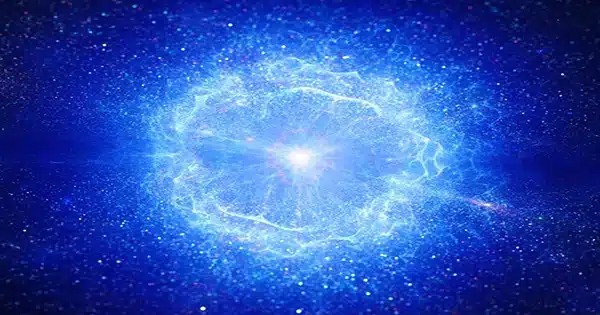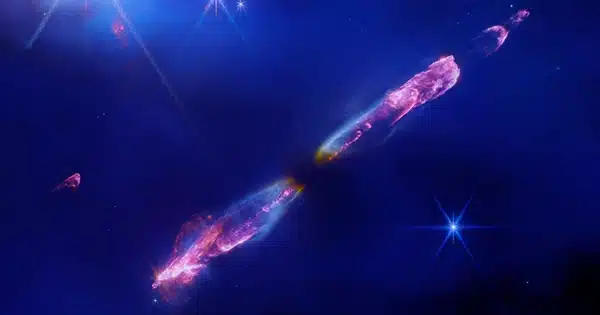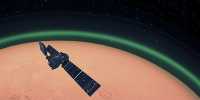Herbig-Haro (HH) objects are bright areas that surround newborn stars and are generated when stellar winds or jets of gas emitted by these newborn stars collide with neighboring gas and dust at high speeds. This image of HH 211, taken by NASA’s James Webb Space Telescope, shows an outflow from a Class 0 protostar, an infantile analog of our Sun when it was just a few tens of thousands of years old and had a mass of only 8% that of our Sun (it would eventually evolve into a star like the Sun).
Because newborn stars are typically trapped within the gas from the molecular cloud in which they formed, infrared photography is extremely useful in studying them and their outflows. Because the star’s outflows’ infrared radiation penetrates the obscuring gas and dust, a Herbig-Haro object like HH 211 is excellent for observation with Webb’s sensitive infrared detectors. Molecules stimulated by turbulent circumstances generate infrared light, which Webb can capture to map the structure of the outflows.

The graphic depicts a sequence of bow shocks to the southeast (lower left) and northwest (upper right), as well as the narrow bipolar jet that drives them. Webb captures this sight in extraordinary detail, with 5 to 10 times the spatial resolution of previous HH 211 photographs. On either side of the center protostar, the inner jet is seen to “wiggle” with mirror symmetry. This is consistent with observations at smaller scales, implying that the protostar is an unresolved double star.
Earlier ground-based observations of HH 211 revealed massive bow shocks flowing away from us (northwest) and towards us (southeast), as well as cavity-like structures in shocked hydrogen and carbon monoxide, as well as a knotty and wiggly bipolar jet in silicon monoxide. Webb’s new measurements were used by researchers to conclude that the object’s outflow is comparatively slow in comparison to more advanced protostars with comparable types of outflows.
The velocity of the innermost outflow structures was measured to be between 48 and 60 miles per second (80 and 100 kilometers per second). However, the velocity differential between these sections of the outflow and the leading material with which they collide — the shockwave — is substantially smaller. Because the comparatively low shock wave velocities are not powerful enough to break the molecules apart into simpler atoms and ions, the researchers determined that outflows from the youngest stars, such as that in the center of HH 211, are largely made up of molecules.
The James Webb Space Telescope is the world’s leading observatory for space science. Webb is investigating mysteries in our solar system, as well as distant worlds orbiting other stars, and delving into the unfathomable architecture and beginnings of our universe and our place in it. Webb is a NASA-led international effort with partners ESA (European Space Agency) and the Canadian Space Agency.















